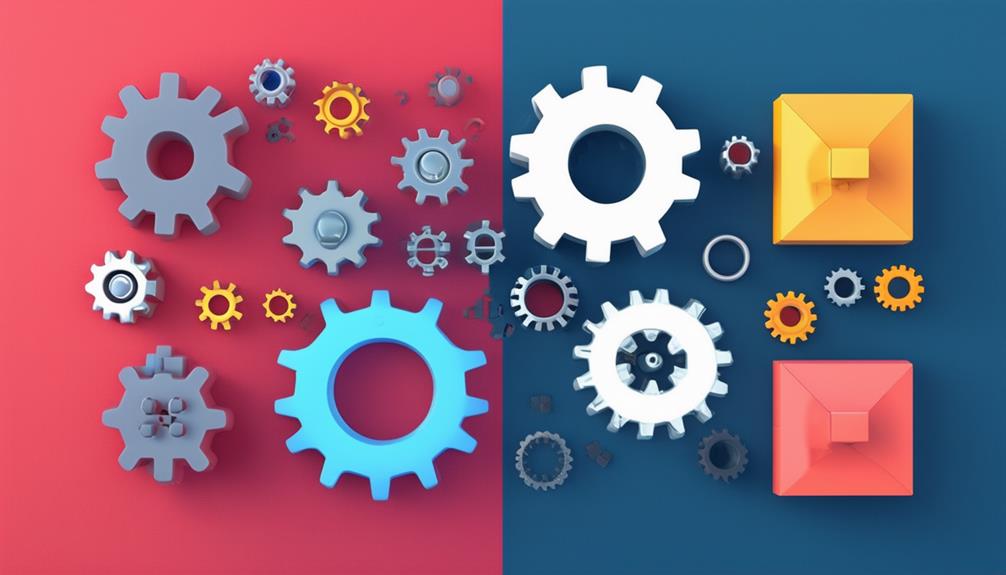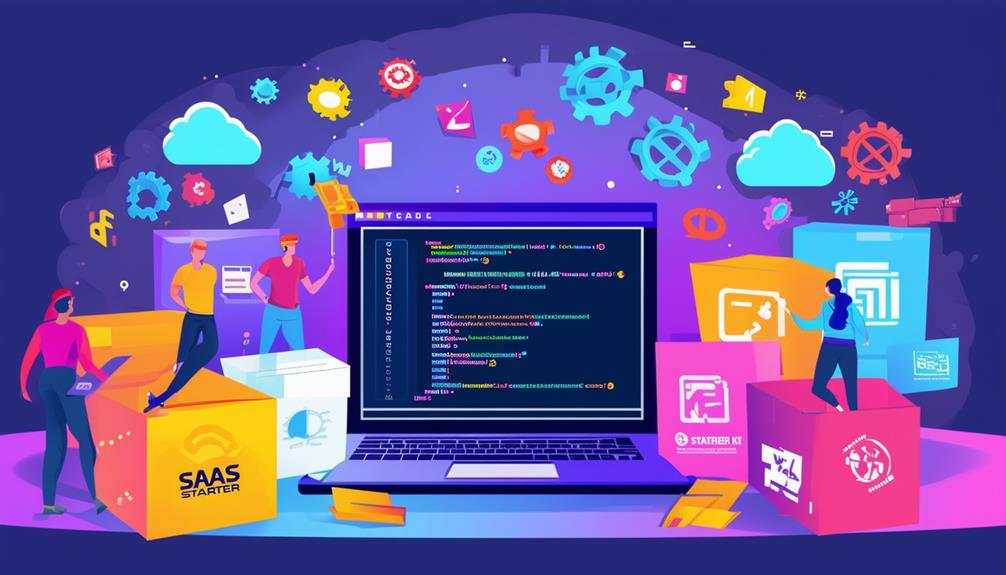When you’re considering how to build your next software project, you’ll likely encounter two main options: SaaS boilerplates and custom development. These approaches differ considerably in several key areas, including development time, customization, scalability, maintenance, and ownership rights. Understanding these differences is essential for making an informed decision that aligns with your project goals and budget. While boilerplates offer speed and cost-efficiency, custom solutions provide unparalleled flexibility. But there’s more to the story than just time and money. Let’s explore the five critical factors that set these approaches apart and how they can impact your project’s success.
Development Time and Cost
One of the most significant differences between SaaS boilerplates and custom development lies in their impact on project timelines and budgets. When you opt for a SaaS boilerplate, you’re fundamentally leveraging pre-built components and frameworks, which can dramatically reduce development time. Studies show that using boilerplates can cut development time by up to 40-60%, allowing you to launch your product faster and start generating revenue sooner.
Cost-wise, SaaS boilerplates often require a lower initial investment. You’re not starting from scratch, which means fewer billable hours for developers. However, it’s important to evaluate long-term costs. While custom development may have a higher upfront cost, it offers more flexibility and can be more cost-effective in the long run if your needs are unique.
Custom development, on the other hand, gives you complete control over timelines and features. You’re not constrained by pre-existing structures, but this freedom comes at the cost of longer development cycles. On average, custom projects take 2-3 times longer than boilerplate-based ones.
It’s vital to weigh these factors against your specific business needs and resources when deciding between the two approaches.
Customization and Flexibility
When it comes to customization and flexibility, SaaS boilerplates and custom development stand at opposite ends of the spectrum, each offering distinct advantages and limitations for your project.
SaaS boilerplates provide a quick start with pre-built components, but they can restrict your ability to tailor the solution to your specific needs. You’re often confined to the features and design elements provided by the boilerplate, which may not align perfectly with your vision.
Custom development, on the other hand, offers unlimited flexibility. You have complete control over every aspect of your application, from its architecture to user interface. This allows you to create a unique solution that precisely matches your requirements and can adapt as your business evolves.
However, this flexibility comes at a cost. Custom development requires more time, resources, and technical expertise. You’ll need to make decisions about every feature and design element, which can be overwhelming.
According to a 2022 survey by Gartner, 63% of businesses cited lack of customization as a major challenge with SaaS solutions. Meanwhile, 72% of companies opting for custom development reported higher satisfaction with their ability to meet specific business needs.
Scalability and Performance
While customization sets the stage for your project’s unique features, scalability and performance determine how well your solution can grow and maintain its efficiency over time. When comparing SaaS boilerplates to custom development, you’ll find significant differences in these areas.
SaaS boilerplates often come with built-in scalability features, leveraging cloud infrastructure and load balancing to handle increased user loads. They’re typically designed to accommodate growth, with 72% of SaaS providers offering automatic scaling options. However, this one-size-fits-all approach may not always align with your specific needs.
Custom development, on the other hand, allows you to tailor scalability and performance to your exact requirements. You can optimize database queries, implement caching strategies, and design efficient architectures from the ground up. This approach can lead to better performance, with custom-built solutions showing up to 30% faster response times in some cases.
It’s worth noting that 68% of businesses cite performance as a critical factor in their software choices. While SaaS boilerplates offer quick scalability, custom development provides the opportunity to fine-tune every aspect of your system’s performance, potentially giving you a competitive edge in the long run.
Maintenance and Support
The ongoing maintenance and support of your software solution can make or break its long-term success, with 87% of businesses reporting that effective support is essential for their operations. When comparing SaaS boilerplates to custom development, you’ll find significant differences in this area.
SaaS boilerplates often come with built-in support and maintenance features. You’ll benefit from regular updates, bug fixes, and security patches provided by the platform. This can save you time and resources, as 68% of businesses cite reduced IT workload as a key advantage of SaaS solutions.
Custom development, on the other hand, requires you to handle maintenance and support in-house or through a dedicated team. While this offers more control, it can be resource-intensive. Studies show that companies spend an average of 15-20% of their annual IT budget on maintenance for custom software.
Consider your long-term needs when choosing between these options. If you’re looking for a low-maintenance solution, a SaaS boilerplate might be ideal. However, if you need highly specialized support or want complete control over updates and modifications, custom development could be the better choice.
Ownership and Intellectual Property
Ownership and intellectual property rights are essential factors to contemplate when choosing between SaaS boilerplates and custom development, with 73% of businesses citing IP concerns as a major decision-making factor.
When you opt for custom development, you typically retain full ownership of the source code and intellectual property. This gives you complete control over your software’s future and allows you to modify, sell, or license it as you see fit.
In contrast, SaaS boilerplates often come with licensing restrictions. While you’ll own the customizations you make, the core framework remains the property of the boilerplate provider. This can limit your ability to resell or transfer the software. According to a recent survey, 62% of businesses using boilerplates reported feeling constrained by IP limitations.
However, it’s worth noting that 89% of SaaS boilerplate users found the trade-off acceptable, given the reduced development costs and faster time-to-market.
Your decision should ultimately depend on your long-term goals. If you’re planning to build a proprietary platform or potentially sell your software in the future, custom development might be the better choice. For quicker deployment and lower upfront costs, a boilerplate could be more suitable.
To Wrap Up
You’ve seen the key differences between SaaS boilerplates and custom development.
They’re not one-size-fits-all solutions. Your choice depends on your specific needs, budget, and long-term goals.
Remember, boilerplates offer speed and cost-efficiency, while custom development provides ultimate flexibility and control.
Consider your project’s requirements carefully.
Weigh the pros and cons of each approach.
Make an informed decision that’ll set your business up for success in the competitive SaaS landscape.






